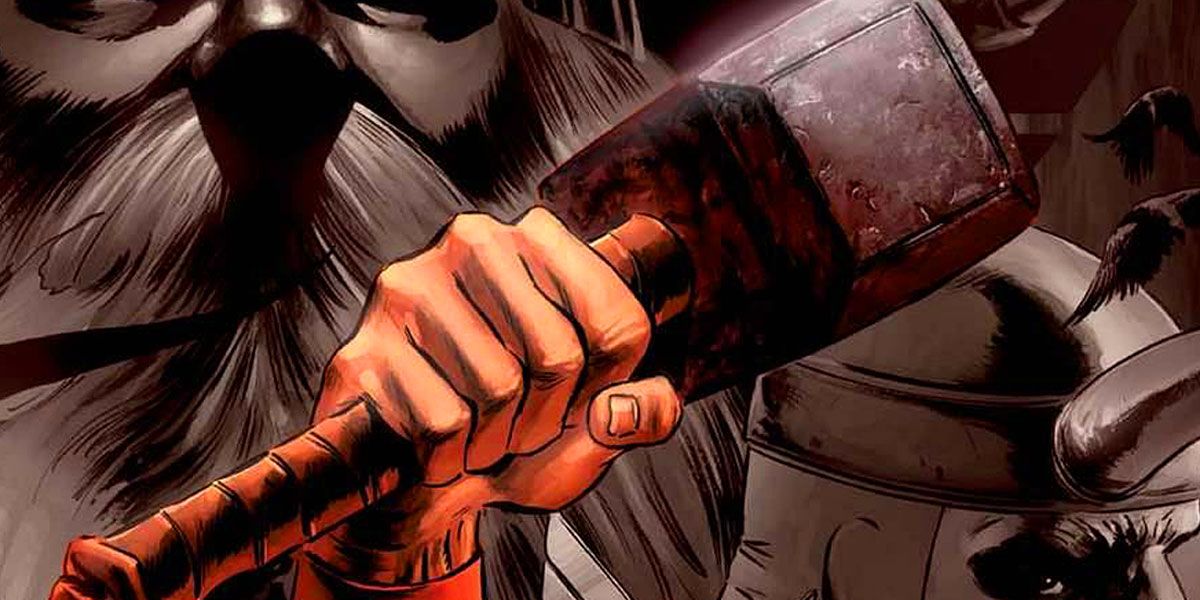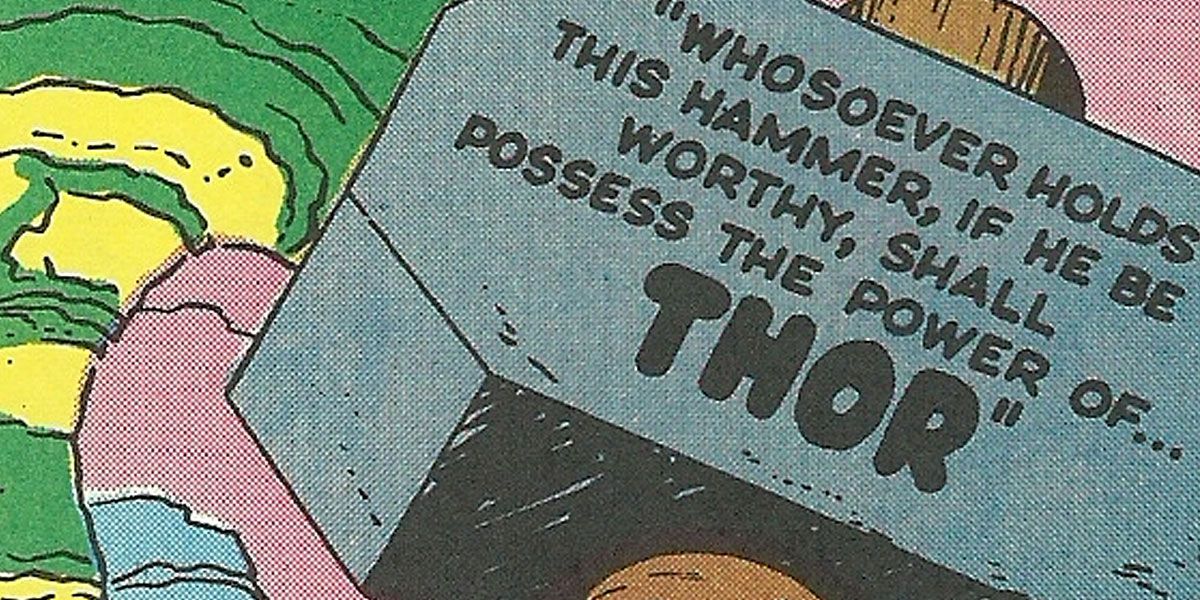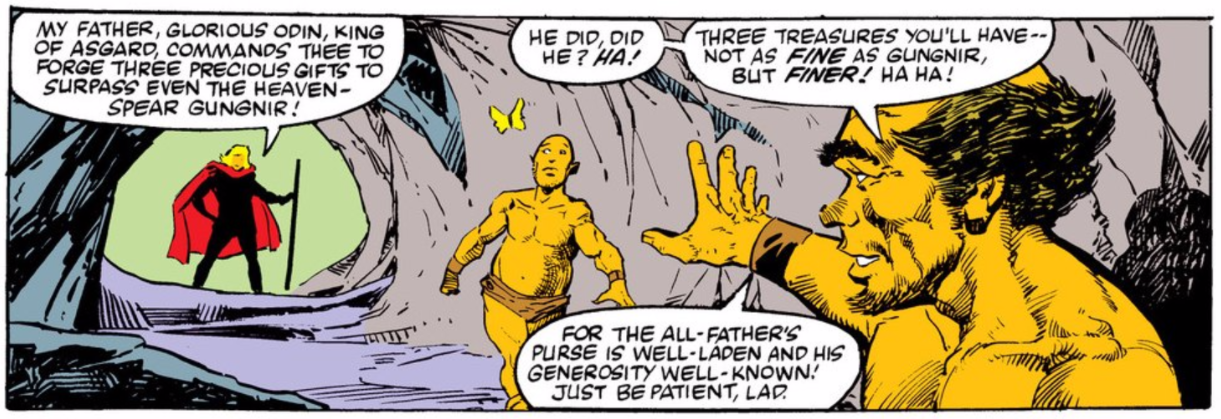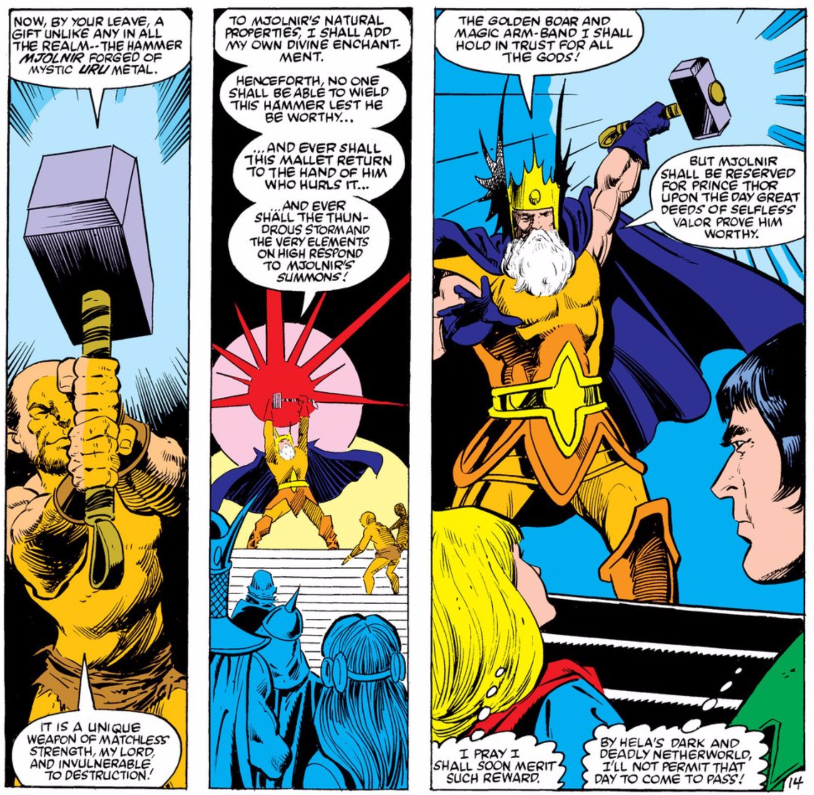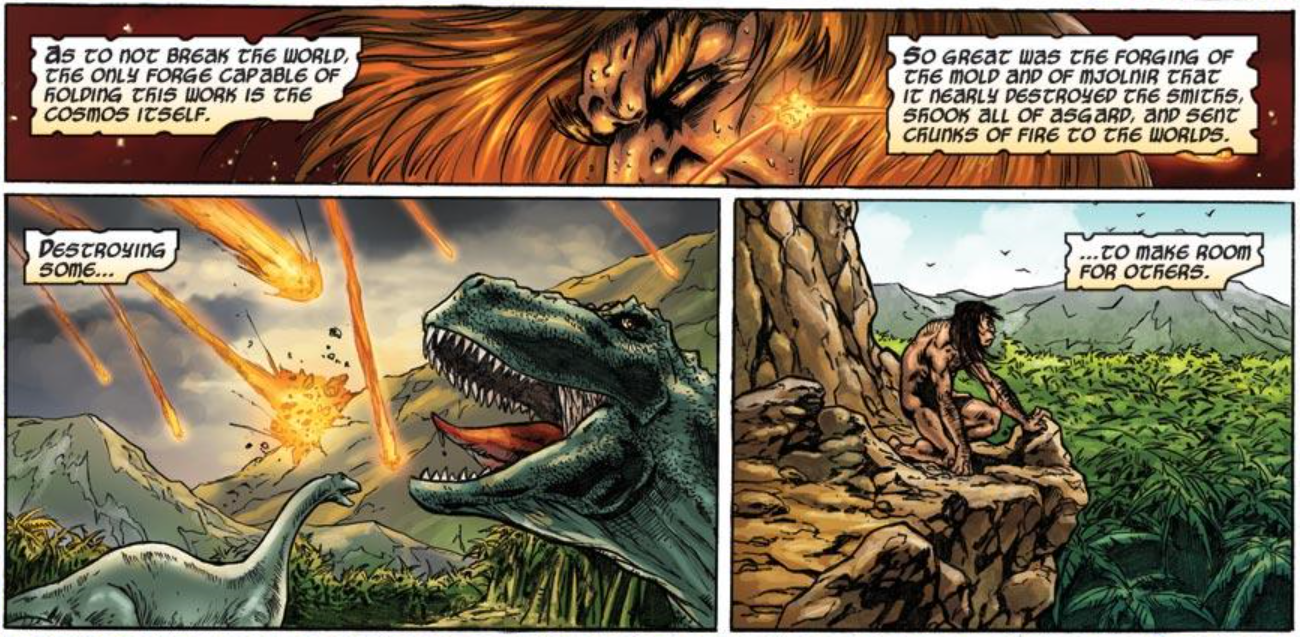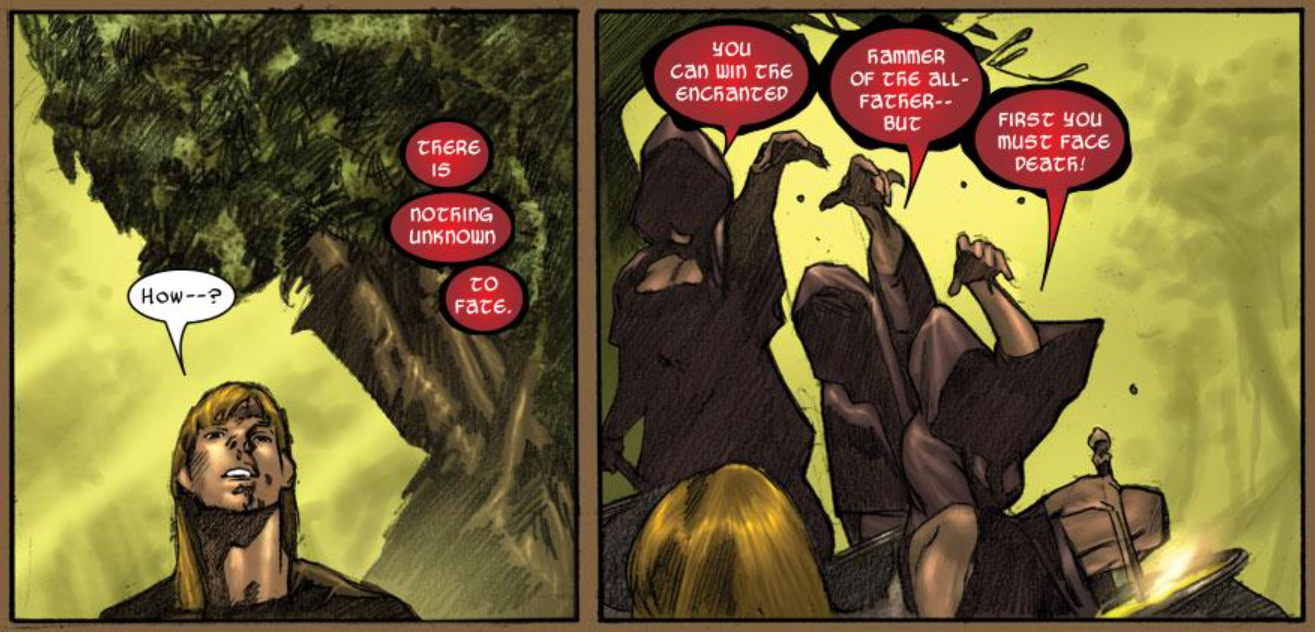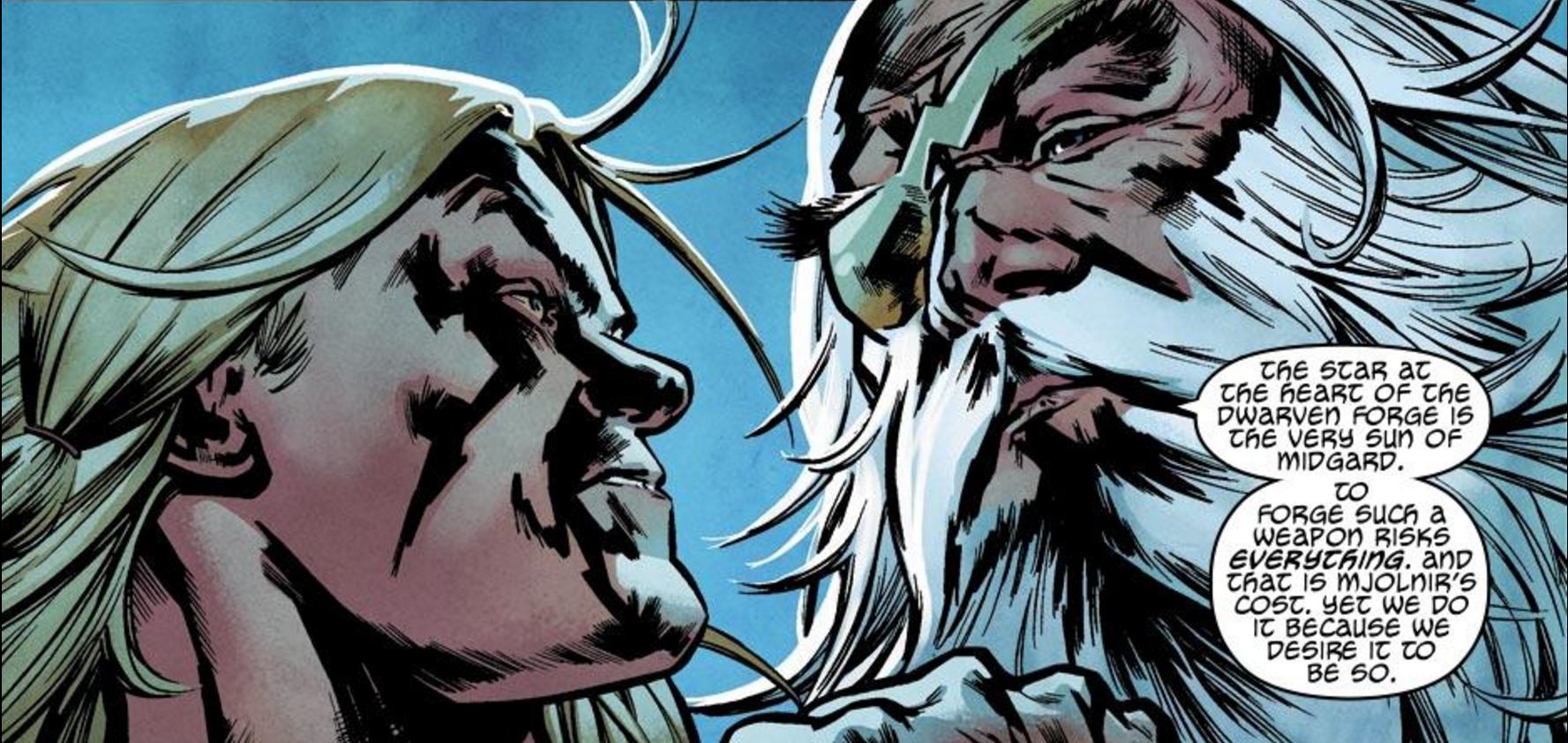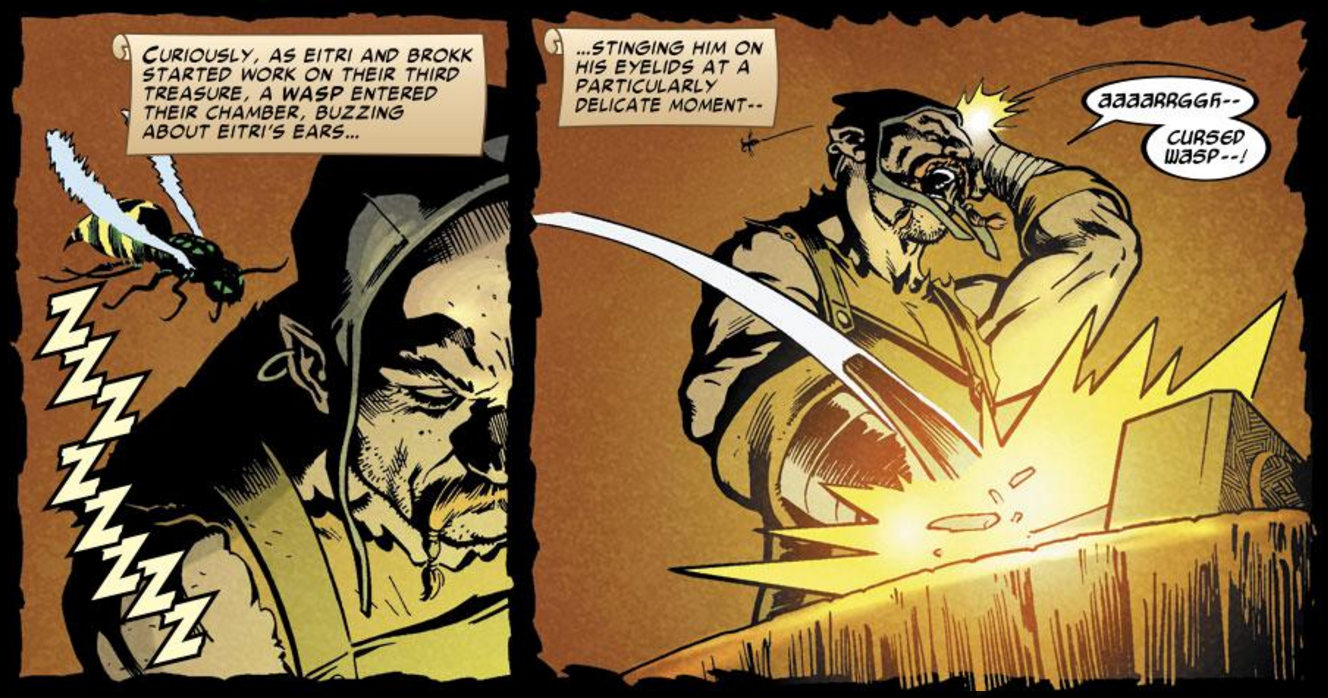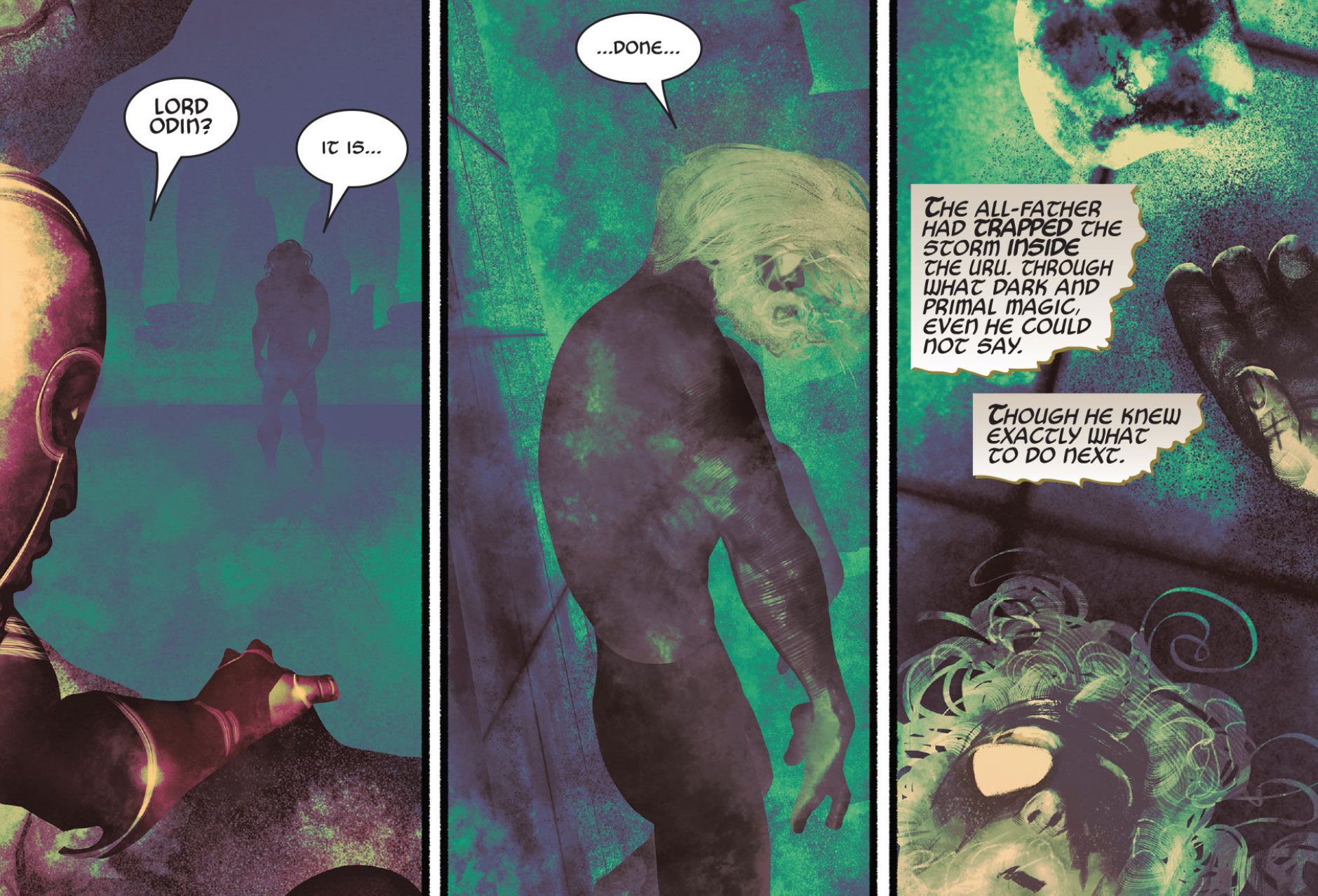The most recent issue of "Mighty Thor" dropped new revelations about the origin of the Asgardian god's equally mighty hammer, Mjolnir. But as longtime fans of the superhero know, this is hardly the first time "Thor" readers have learned the 'true story' about its forging.
Over the years, the Mjolnir origin story has been told and retold, emphasizing and changing different details in each version. Below, we look at the most intriguing of the mythic hammer's many origins since it was first introduced to Marvel Comics readers in 1962.
RELATED: The Secret Origin of Mjolnir Revealed in Mighty Thor #12
The Mjolnir of Many Rules
Journey Into Mystery #83 (1962)
"Journey Into Mystery" #83 introduced Thor and the mortal man who transforms into the Asgardian thunder god, Donald Blake. Fleeing from stone aliens into a cave, Donald discovers a "gnarled wooden stick – like an ancient cane!" When he angrily strikes it against a boulder, he transforms into Thor and, in '60s comics fashion, lays out the very specific rules of the hammer.
"By stamping the handle twice on the ground, I can create rain or snow," Blake explains. To end the storm, however, he must "stamp this handle three times on the ground!" And if he stamps the hammer only once? It transforms back into a cane. Mjolnir's nature and powers would later be expanded to give Thor some more leeway, but in its initial appearance, this weapon is a bureaucrat's dream.
The Mjolnir Because Odin Says So
"Thor Annual" #11 (1983)
Odin sends young Thor to demand three presents from the descendants of the dwarves who made Gungnir, Odin's battle spear, because, well, he's the All-Father, and he wants them. The dwarves are eager to please, since "the All-Father's purse is well-laden," so they get to work on three elaborate gifts. Although Loki tries to sabotage the forging by disguising himself as a moth and distracting the dwarves at the bellows, Mjolnir still ends up as "a unique weapon of matchless strength." Odin further enhances the hammer with his own enchantments: Mjolnir can only be handled by the worthy, the thunder and lightning will come at its call, and it will always return to whoever hurls it.
In this telling, the hammer's command of the weather comes from Odin, and the process of forging it is relatively mundane. It doesn't require any more flames than the other two presents -- a living boar made of gold, and a golden armbard -- and it's definitely not as cataclysmic as later origins. Thor eventually proves himself worthy of the hammer in Odin's eyes, after rescuing Sif from the goddess of death, Hela, and so Odin grants him Mjolnir.
RELATED: Beyond Mjolnir: The 15 Greatest Asgardian Weapons
The Mjolnir That Killed the Dinosaurs
"Thor" Volume 2 #80 (2004)
Mjolnir wreaks some real havoc in this version. Needing a "great weapon to strike down [Asgard's] enemies," Odin seeks out the dwarf Eitri - and Eitri really goes for that employee-of-the-month status. He determines that "the only forge capable of holding this work is the cosmos itself," and so he uses "the heart of a sun" in order to create the mold for Mjolnir. The explosive forging of the mold and Mjolnir "sen[ds] chunks of fire to the worlds," including the asteroid that destroys the dinosaurs. "This is what it takes to forge a weapon for the gods, nothing less than the death of a sun and a planet!" Unlike earlier incarnations, this Mjolnir's ferocious power seems to come from its forging. Even thousands of years later, the forge itself continues to simmer with power.
Interestingly, in this telling, Odin wields Mjolnir first. It's actually the weapon that Odin used to kill King Laufey, Loki's father -- which makes it a little weirder that he eventually gives it to Thor.
The Mjolnir That Demands Death
"Thor: Son of Asgard" (2004)
In this series, Mjolnir sits in the throne room taunting Thor with his unworthiness. Instead of needing Odin's direct approval, Thor needs the hammer itself to choose him. At first, Thor struggles to even shake the weapon, and so when there is a chance to prove his worth in battle, he immediately wants to leap into action. Odin urges him to instead stay home and defend Asgard, advising, "You'll find that it's what's in one's heart that truly makes one worthy."
The Norns, however, are far less touchy-feely. They prophecy that in order to be worthy of Mjolnir, Thor must face death -- specifically Hela, the goddess of death and ruler of Hel. That said, Mjolnir doesn't exactly ask for receipts. When Sif is taken by Hela and the giants, and Thor rushes to pursue them, he is suddenly able to lift the hammer -- because he was willing to risk his life for hers. Mjolnir doesn't wait to see if he actually follows through (though, being Thor, he does). So "what's in one's heart" was what mattered after all.
The Mjolnir for Midgard
"Avengers Origins: Thor" (2011)
While many of Mjolnir's origin stories agree on the mechanics of its creation, they can differ in their idea of its essential nature. In "Avengers Origins: Thor," the comic meant to tie into the 2011 movie, Odin emphasizes the hammer's connection to Midgard.
The basic story contains familiar elements. Thor is sent to Brock and Eitri to "command" three gifts that "will surpass even the heaven spear, Gungnir." The dwarves "harness the brightest light of day in [their] forge" and bind Mjolnir with enchantments of their own, to which Odin later adds the worthiness restriction and control of the weather.
Thor eventually proves his worthiness by rushing to rescue Sif, but before this, Odin tells Thor that he's destined for Mjolnir - not because of his warrior spirit, but because is a "scion of Midgard" through his mother, and "Midgard is carried within Mjolnir." The "heart of the forge," the "brightest light of day" that the dwarves used to forge the hammer, is in fact "the very sun of Midgard." (No dinosaurs died this time around, though.) Since the "Thor" movies takes place predominantly on Midgard, the conspiracy theorist in us all can see why it might have made sense for the creators to emphasize this connection.
The Mjolnir That Loki Made
"Loki" (2010)
Given that this retelling comes from Asgard's perennial villain, it's likely meant to be taken with a grain of salt, but here goes: After cutting off Sif's hair in a jealous snit, Loki is ordered to commission replacement hair from the dwarves. The sons of Ivaldi craft glorious golden hair, and other magical gifts besides, but Loki gets greedy - and tricky. He travels to Brokk and Eitri, two other dwarves, and says, "If you can craft treasures more splendid than the ones the sons of Ivaldi made, I'll forfeit my head to you." This way, he'll have even more gifts to bring back to Asgard. To ensure he doesn't lose his bet, he disguises himself as a wasp and bothers the dwarves as they work. Mjolnir therefore comes out with a shorter handle than expected, but when it is presented to Odin, the king of Asgard still finds it so "magnificent" that he declares it superior to the others. (Loki, being Loki, still manages to trick his way out of losing his head to the dwarves.)
How does Thor prove himself "worthy" of Mjolnir in this version? Brokk the dwarf, enraged at being tricked out of his prize, enlists Thor to sew Loki's mouth shut in punishment for his trickery. As thanks for helping with this gruesome task, and "for living with honor, for being a friend to the dwarves," Brokk then gives Mjolnir to Thor.
The Mjolnir With a Mind of Its Own
"Mighty Thor" (2016)
Most recently, "The Mighty Thor" #12 gave Mjolnir its newest origin story. Inside the hammer lies a "sentient storm," a cosmic thunderstorm that has been around since time immemorial, which Odin trapped in Uru during a mighty battle. After trapping the storm, Odin commanded that the dwarves forge it into a weapon. As in some other retellings, the forging of Mjolnir is world-shattering. The dwarves kill a star and drag it into their furnaces to provide enough fuel, but the storm fights against them until the mountains crumble and spew lava. Even once Mjolnir is made, it flings Odin furiously around the cosmos, still refusing to yield. Eventually, though, it takes a liking to young Thor; he thinks he hears it "whispering" to him.
The storm has recently started to reassert its personality by talking to the new Thor and taking on the form of Jane Foster. It remains to be seen how much more of that personality will come out in future issues.
Of course, looking at its various creation myths, Mjolnir has always had something of a personality. What that personality is, though, depends on the version you read.
"Mighty Thor" #12, featuring the latest origin of Mjolnir, is on sale now.

